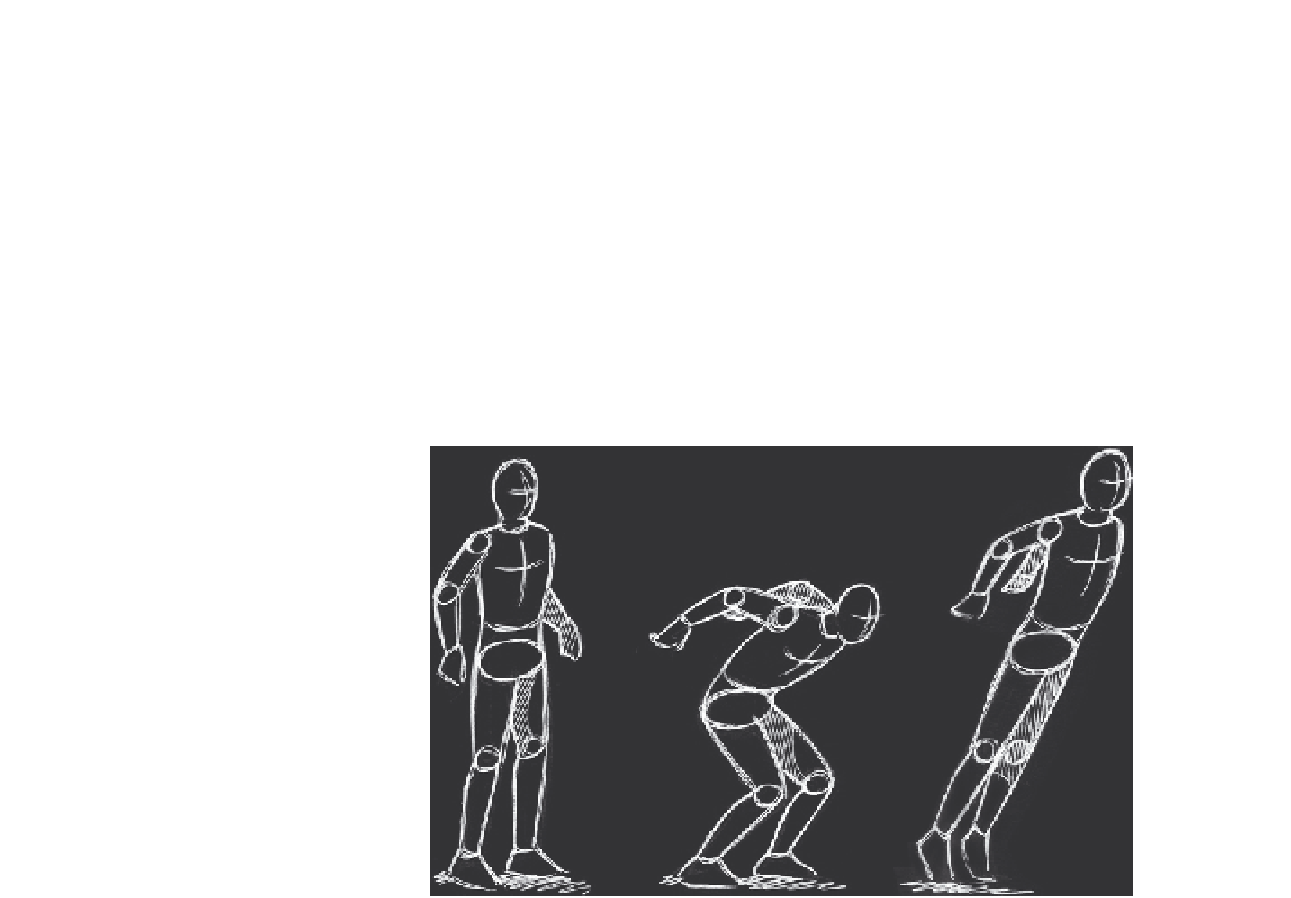Graphics Reference
In-Depth Information
Taking Off
Preparatory Phase
The figure begins the preparatory phase by standing completely relaxed in
an upright position. The figure then bends at the knees with the torso tilting
forward to around 45 degrees. At the same time, the arms move backward,
rotating at the shoulder; the head pivots at the neck to maintain a horizontal
and forward-looking gaze. The three distinct actions—the bend in the knees,
the movement of the arms, and the tilt of the torso—occur simultaneously,
though only the bend in the knees is a primary action; the others are
secondary.
FIG 7.31
The phased sequence of a
jump. a: Starting position. b: Preparatory
phase. c: Execution phase.
(a)
(b)
(c)
Execution Phase
The knees are flexed rapidly, providing the thrust for the jump the arms
swing quickly forward and the torso straightens. The head pivots to maintain
a horizontal alignment of the eyes. These actions are combination actions
because they work together to create the single action, though they are
slightly staggered. The legs and the flexing of the torso are primary actions;
the movement of the arms is a strong secondary action. The movement
of the hair is a tertiary action and happens only as a result of the other
movements.
Resulting Phase
The figure is propelled through the air as a result of the previous actions. The
period during which the figure is moving through the air is as a direct result of
the preparatory and execution phases.

